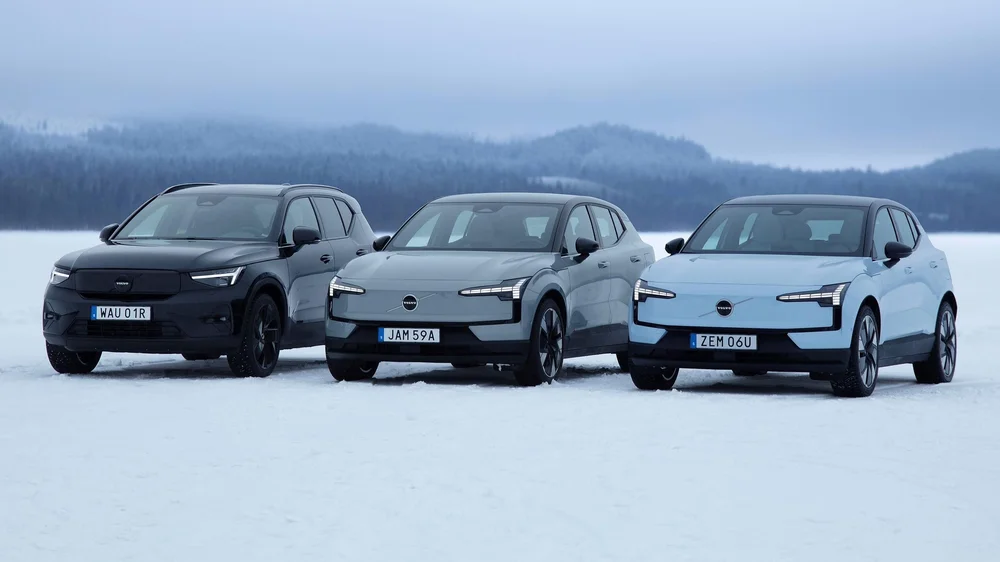Volvo Revolutionizes EV Ownership with Plug & Charge and Next-Gen Infotainment

In a significant move to enhance the electric vehicle (EV) ownership experience, Volvo Cars has announced the rollout of two major technological upgrades set to debut in their 2026 model year. These innovations, tailored to streamline the charging process and modernize the user interface, are poised to make a substantial impact on the EV market, particularly in Europe.
Streamlined Charging with Plug & Charge
Volvo is introducing the Plug & Charge functionality, a feature that simplifies the public charging experience for drivers. This technology, already successful in the EX90 model, will now be available for the EX30, EX40, and EC40 models in Europe. The Plug & Charge system creates a direct communication link between the vehicle and the charging station, automatically identifying the car and its associated payment method as soon as the charging cable is connected. This eliminates the need for traditional payment authentication methods such as credit cards or smartphone apps, making the charging process seamless and hassle-free.
To facilitate the use of this feature, Volvo has integrated it with Google Maps in the vehicle’s infotainment system and the Volvo Cars mobile app, helping drivers locate compatible charging stations effortlessly.
Next-Gen Infotainment System
Alongside the Plug & Charge feature, Volvo is launching a comprehensive overhaul of its infotainment system, powered by the latest Qualcomm Snapdragon Cockpit Platform. This new system, dubbed Volvo Car UX, promises substantial performance improvements. The processing speeds are more than twice as fast as its predecessor, and the graphics generation is up to ten times quicker, resulting in a more responsive and intuitive user experience.
Anders Bell, Volvo Cars’ Chief Engineering and Technology Officer, highlighted the safety benefits of this upgrade, stating that the enhanced system reduces driver distraction by providing the right information at the right time.
The updated user interface features a redesigned home screen that prioritizes frequently used applications like maps, media, and phone functions for quick access. A new contextual bar adapts to different situations, displaying relevant apps based on current usage. The driver’s display has also been enhanced with a larger, more detailed navigation view.
Retrofits and Global Rollout
In a consumer-friendly move, Volvo plans to extend these software improvements beyond new purchases. Through over-the-air (OTA) updates, around 2.5 million existing Volvo vehicles manufactured since 2020 with Google Built-In capabilities will receive the new user interface later this year. This approach aligns with Erik Severinson, Volvo Cars’ Chief Product and Strategy Officer’s vision, ensuring that every Volvo model offers a similar user experience regardless of platform and powertrain.
However, it's important to note that the Plug & Charge feature will only be available as a factory installation on new vehicles, meaning existing owners will not be able to retrofit their cars with this capability. Additionally, while the rollout begins in Europe, Volvo has not yet announced plans for implementing these features in other markets, including the United States.
Enhancing the EV Experience
These technological advancements symbolize Volvo’s commitment to improving the EV ownership experience while maintaining its core values of safety and user-centered design. With such improvements in charging convenience and user interface design, Volvo is likely to play an increasingly important role in the adoption of EVs, making electric vehicle ownership more appealing and practical for drivers in Spain and beyond.
As the automotive landscape continues to evolve, Volvo’s innovative steps are setting a new standard for convenience, safety, and user experience in the electric vehicle sector.
Related Stories

Global Outage Hits Meta Platforms: WhatsApp, Facebook, and Instagram Down for Hours
A global outage affected WhatsApp, Facebook, and Instagram, disrupting millions. Meta worked swiftly to resolve the issue, marking its second major disruption in 2024.

Creating a Safe Digital Environment: A Crucial Step for a Healthy Childhood in Spain
Spain takes significant steps towards ensuring children's online safety amid rising concerns, introducing the world's first mobile tariff with built-in child protection and emphasizing digital literacy and global cooperation.

Spain's Progress and Challenges in the EU's Digital Decade and Economic Landscape
Spain advances in digital transformation and economic growth, yet faces hurdles in cloud adoption, ICT specialist recruitment, and youth unemployment as 2024 ends.

Worldcoin Ordered to Delete User Iris Data Following GDPR Violations
Worldcoin faces a GDPR compliance challenge as it's ordered to delete European users' iris data, highlighting the clash between innovative tech and data protection laws.

Torrelavega’s Tecnoteca Project Nears Completion, Set to Open in 2025
Torrelavega's Tecnoteca project, a hub for innovation and education, is set to open in 2025, promising to transform the local landscape in Cantabria, Spain.